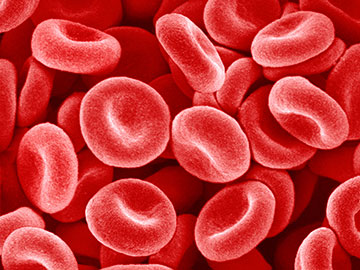
[Image: Getty Images]
Scientists in Germany have investigated the feasibility of infrared (IR) molecular fingerprinting as a potential health-screening tool (Cell Rep. Med., doi: 10.1016/j.xcrm.2024.101625). They applied Fourier transform infrared (FTIR) spectroscopy and machine learning to profile more than 5,100 blood plasma samples from a naturally heterogeneous patient population.
The results suggested that IR fingerprinting can accurately identify healthy individuals and detect common medical conditions from a single measurement. The approach still needs further assessment but could one day boost the efficiency and speed of medical diagnostic routines.
Molecular fingerprinting
While blood-based laboratory test panels are commonly used in the clinic, measuring multiple biomarkers from the same sample can be time consuming and resource intensive. Therefore, a “shotgun” approach that tests for many medical conditions at once is desirable for high-throughput health diagnostics.
“In any adult population, the majority of individuals with identified health aberrations will likely have multiple coexisting conditions,” said study author Mihaela Žigman at Ludwig-Maximilians-Universität München and the Max Planck Institute of Quantum Optics. “Therefore, efficient screening methods to discern between different multimorbid states and rich conditions are essential.”
Žigman and her colleagues aimed to devise a new minimally invasive screening and risk-assessment tool that would contribute to advancing health diagnostics. They chose to explore a concept based on FTIR spectroscopy, which produces an IR spectrum with absorption peaks corresponding to the vibrational frequencies of molecular fragments. The IR absorption spectrum can be thought of as a molecular fingerprint that is characteristic of a sample’s overall molecular composition.
When tested on unseen datasets, IR fingerprinting effectively distinguished between dyslipidemia, hypertension, prediabetes, type 2 diabetes and healthy states.
Leveraging machine learning
The researchers measured 5,184 blood plasma samples from 3,169 individuals―which is, to their knowledge, the largest population ever profiled with IR fingerprinting. The samples came from the Cooperative Health Research in the Region of Augsburg longitudinal cohort, a regional research platform of independent population-based health surveys and subsequent follow-up examinations of individuals in Germany.
The IR fingerprint of each participant was linked to their medical information to build a multi-label machine-learning classifier capable of simultaneously detecting and distinguishing between conditions of interest. When tested on unseen datasets, IR fingerprinting effectively distinguished between dyslipidemia, hypertension, prediabetes, type 2 diabetes and healthy states. It could also characterize participants with multiple conditions and forecast the development of metabolic syndrome years before onset.
“In the future, we will test this concept on even larger and more diverse populations, including people from different genetic and lifestyle backgrounds,” said Žigman. “Since complex clinical traits can be effectively probed systemically in human blood, we have just shown that infrared fingerprints now offer a new in vitro diagnostic possibility and advantage.”

